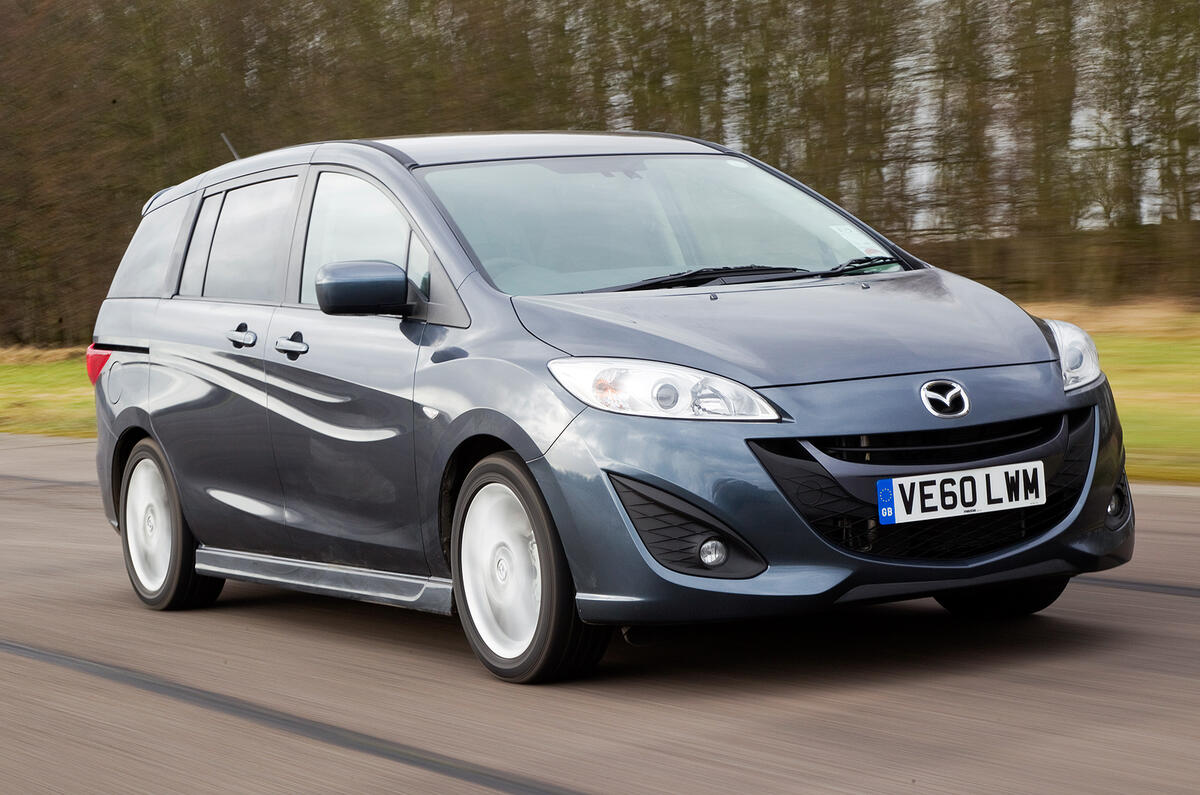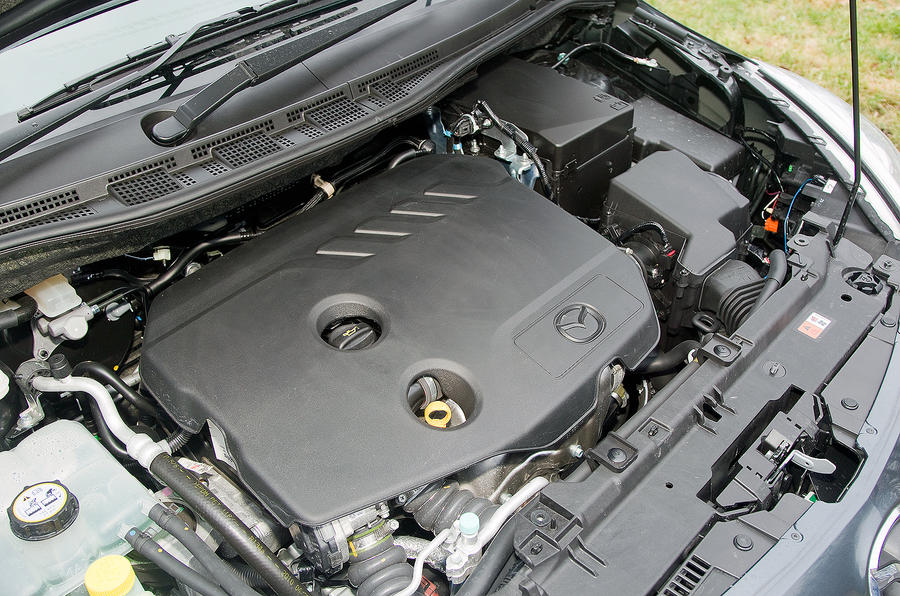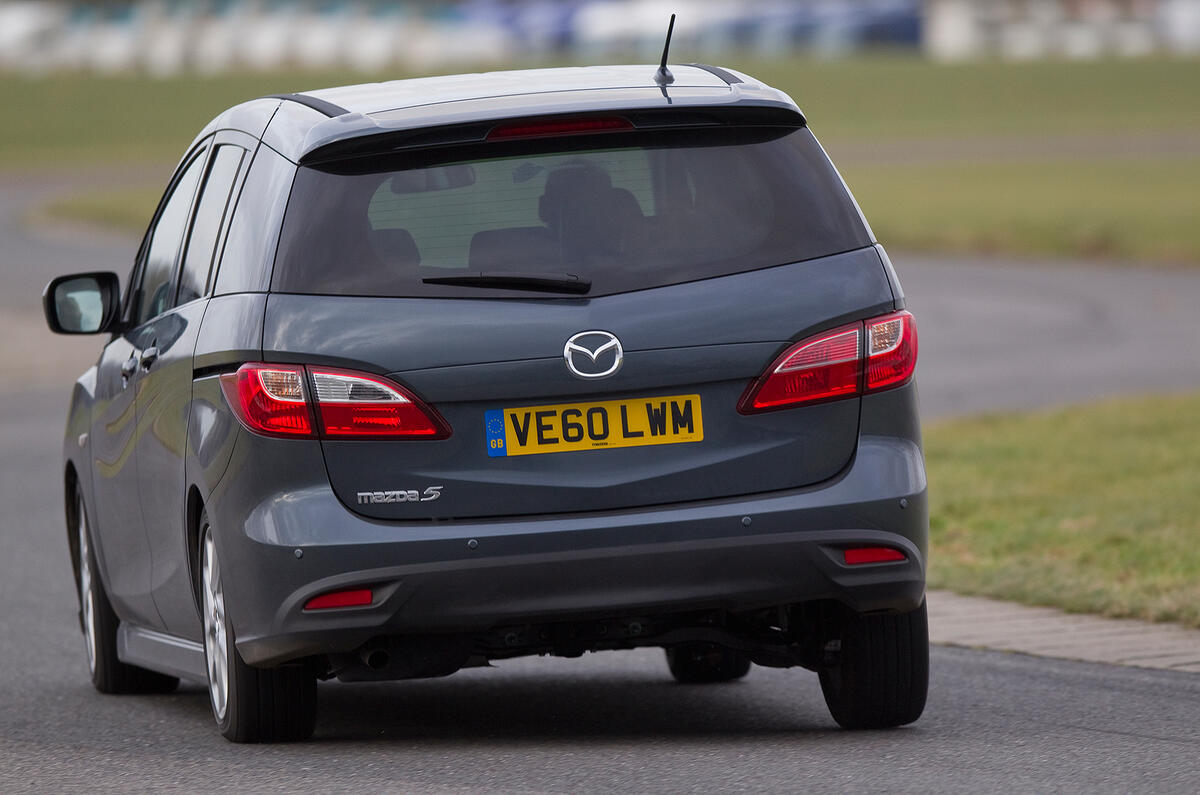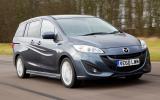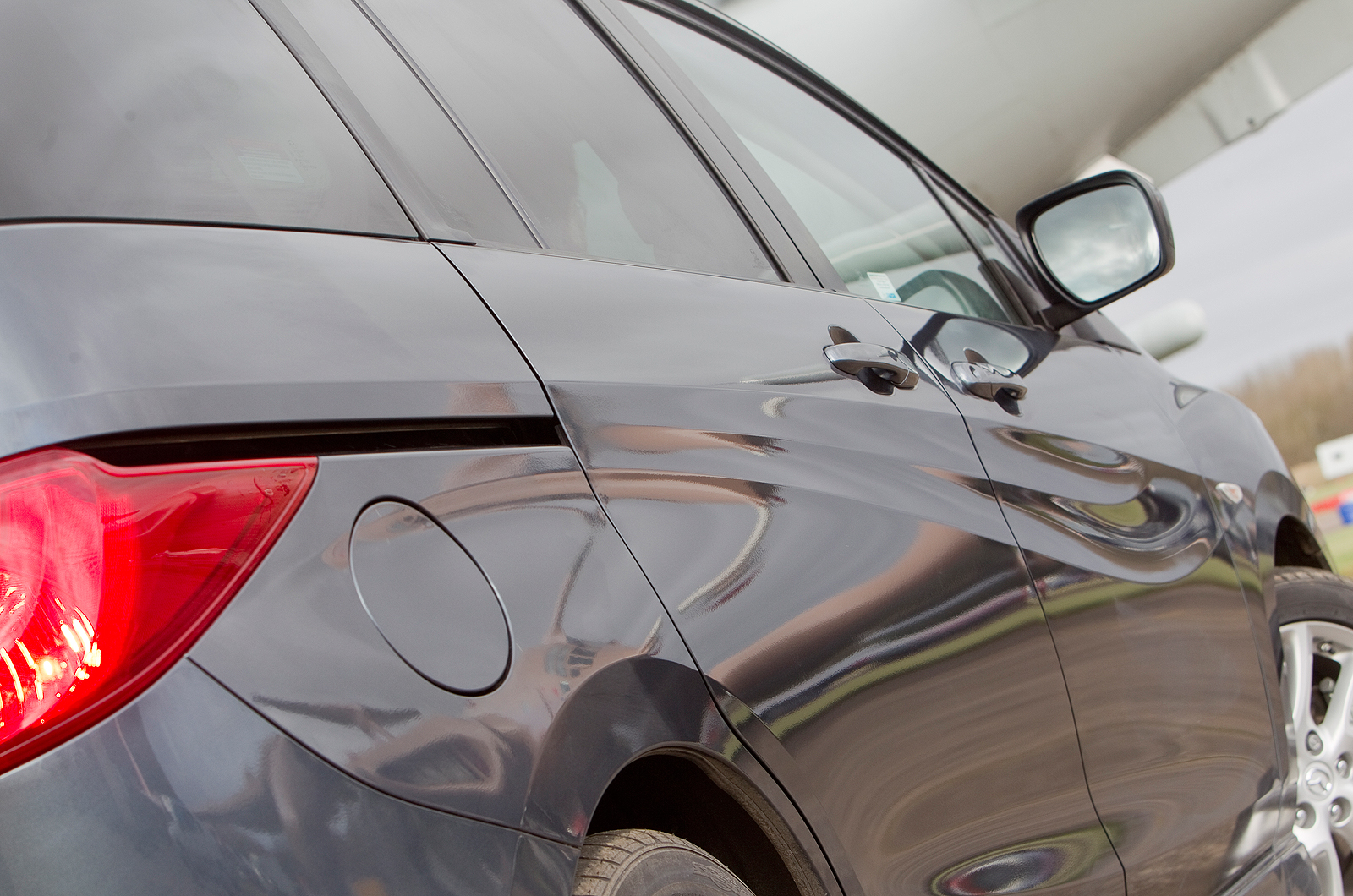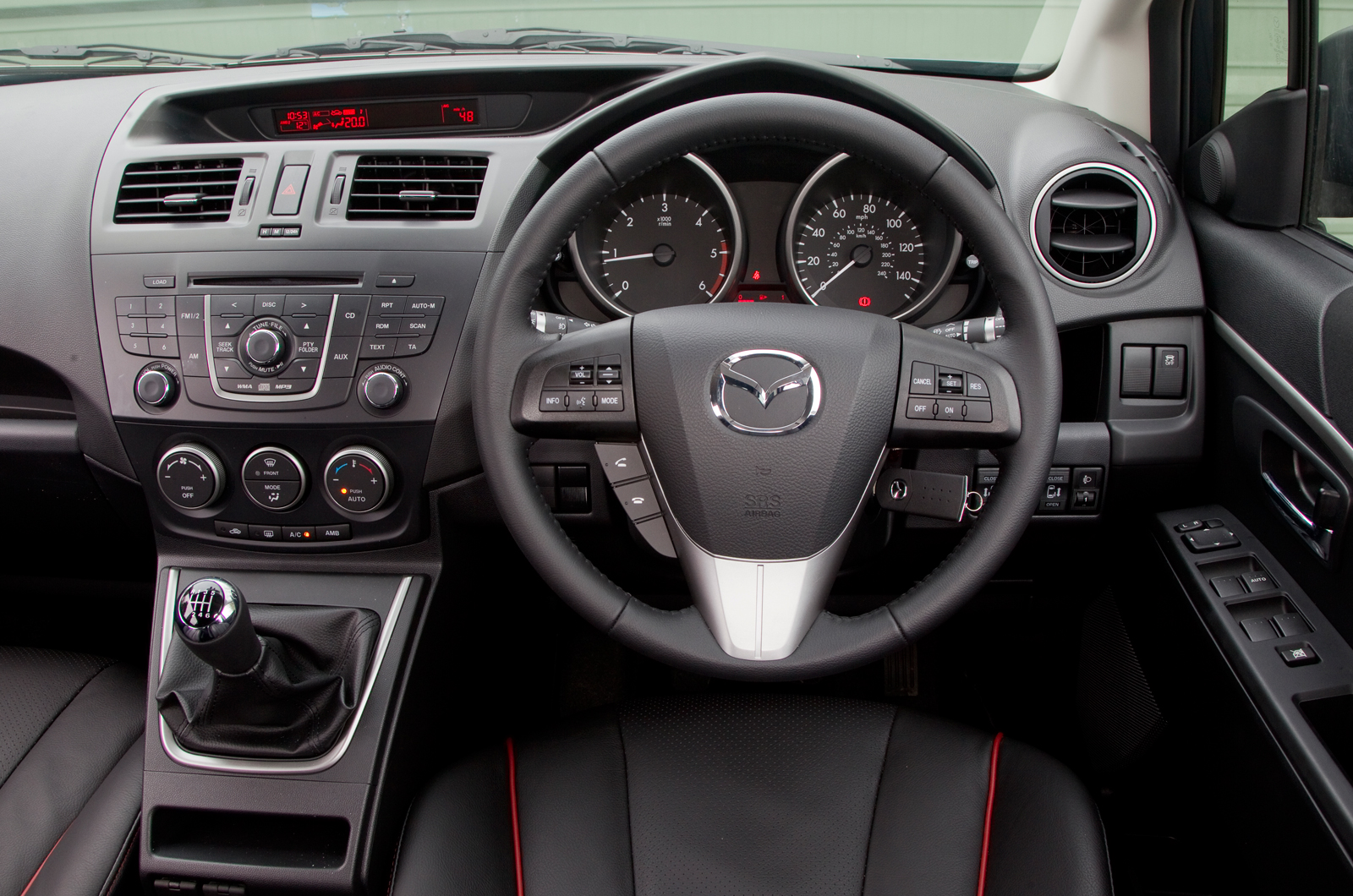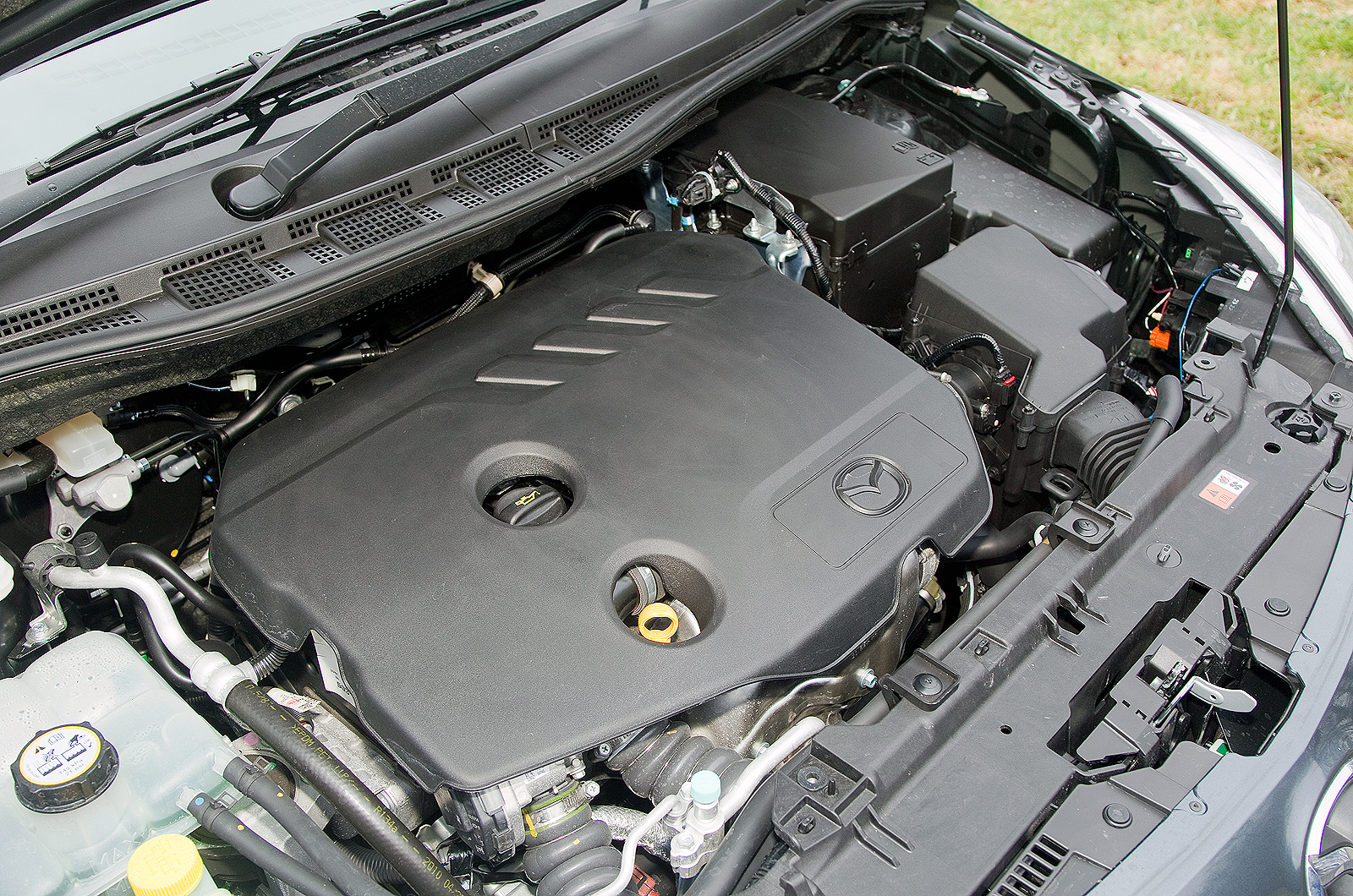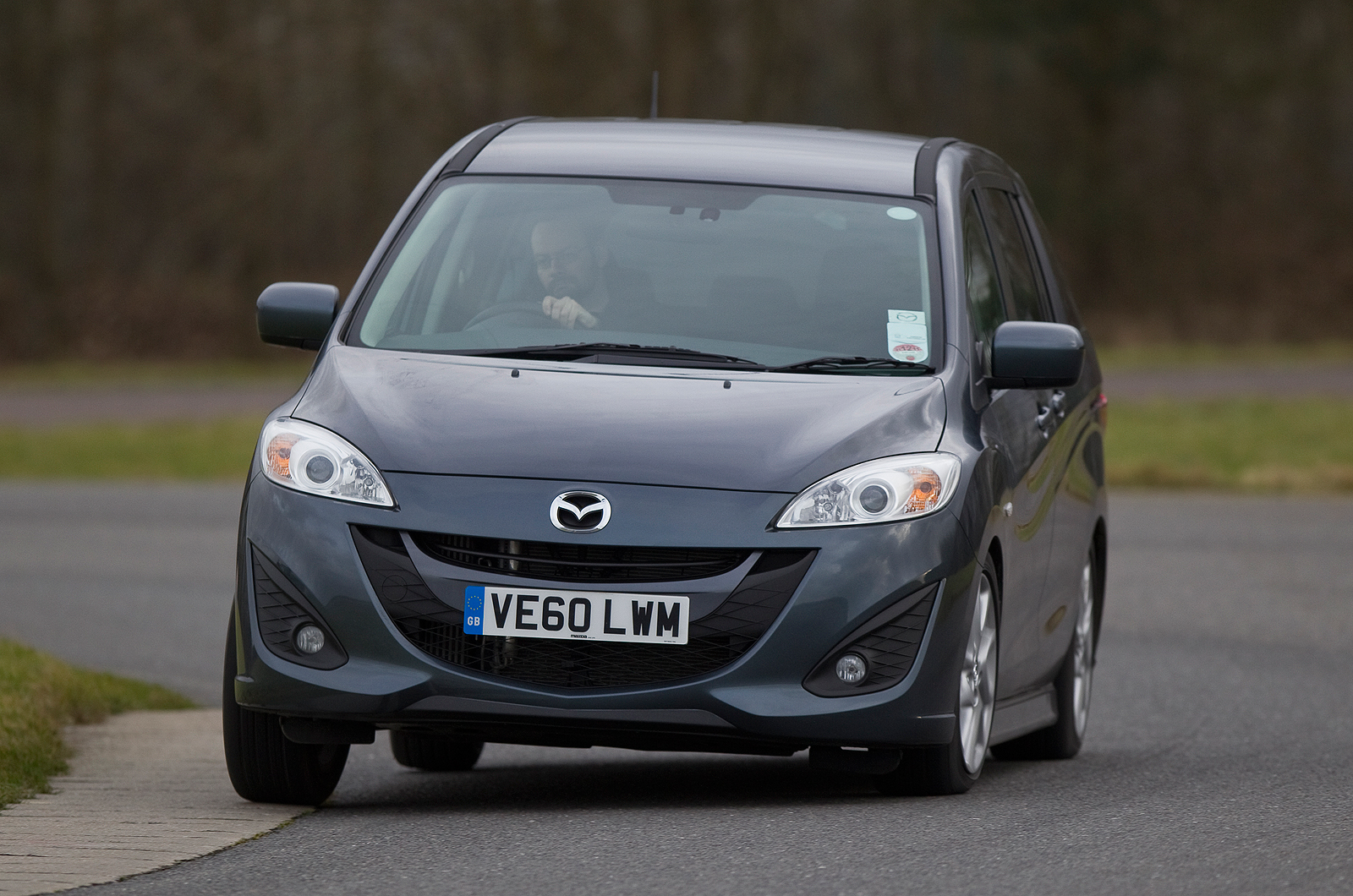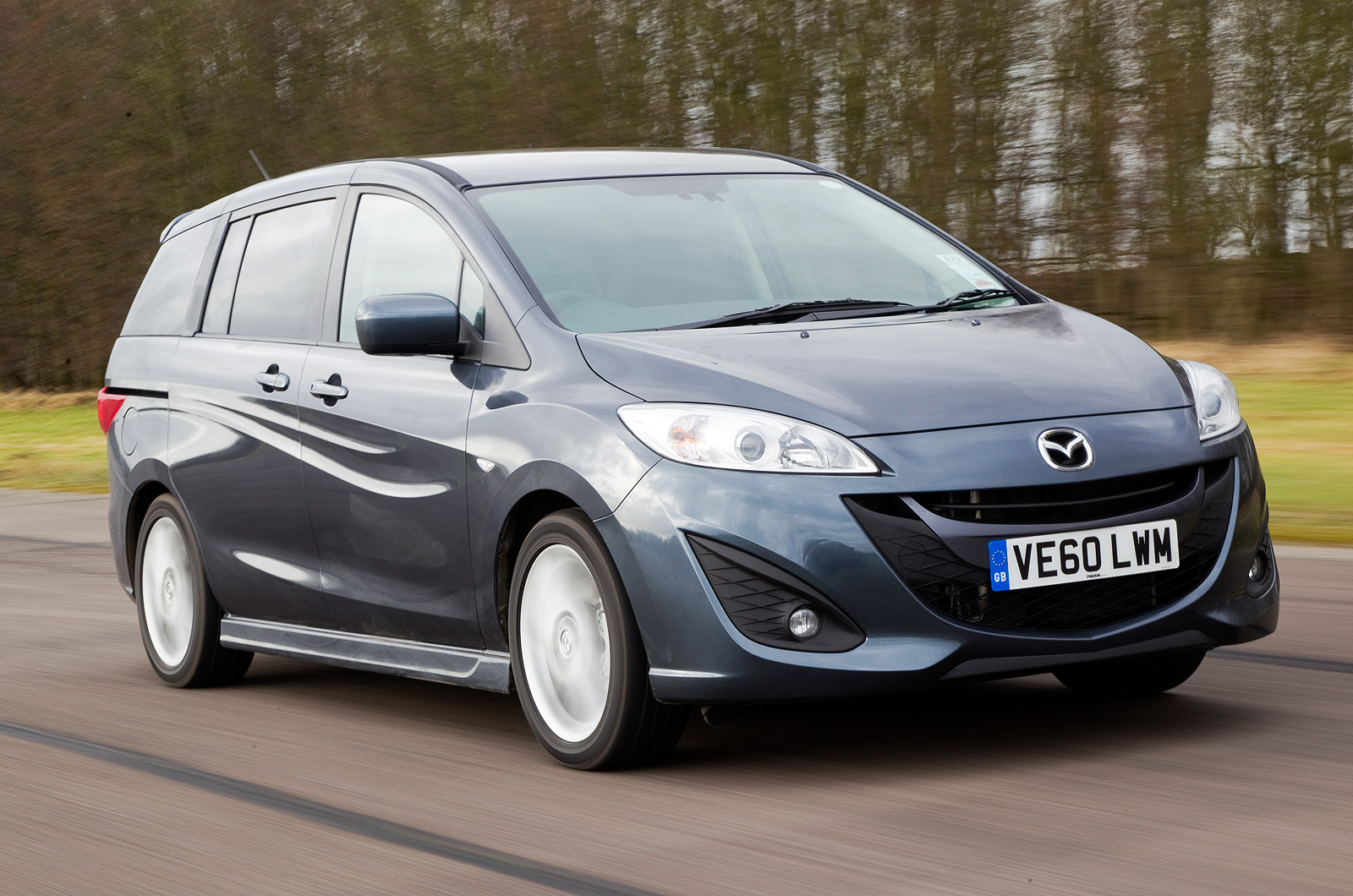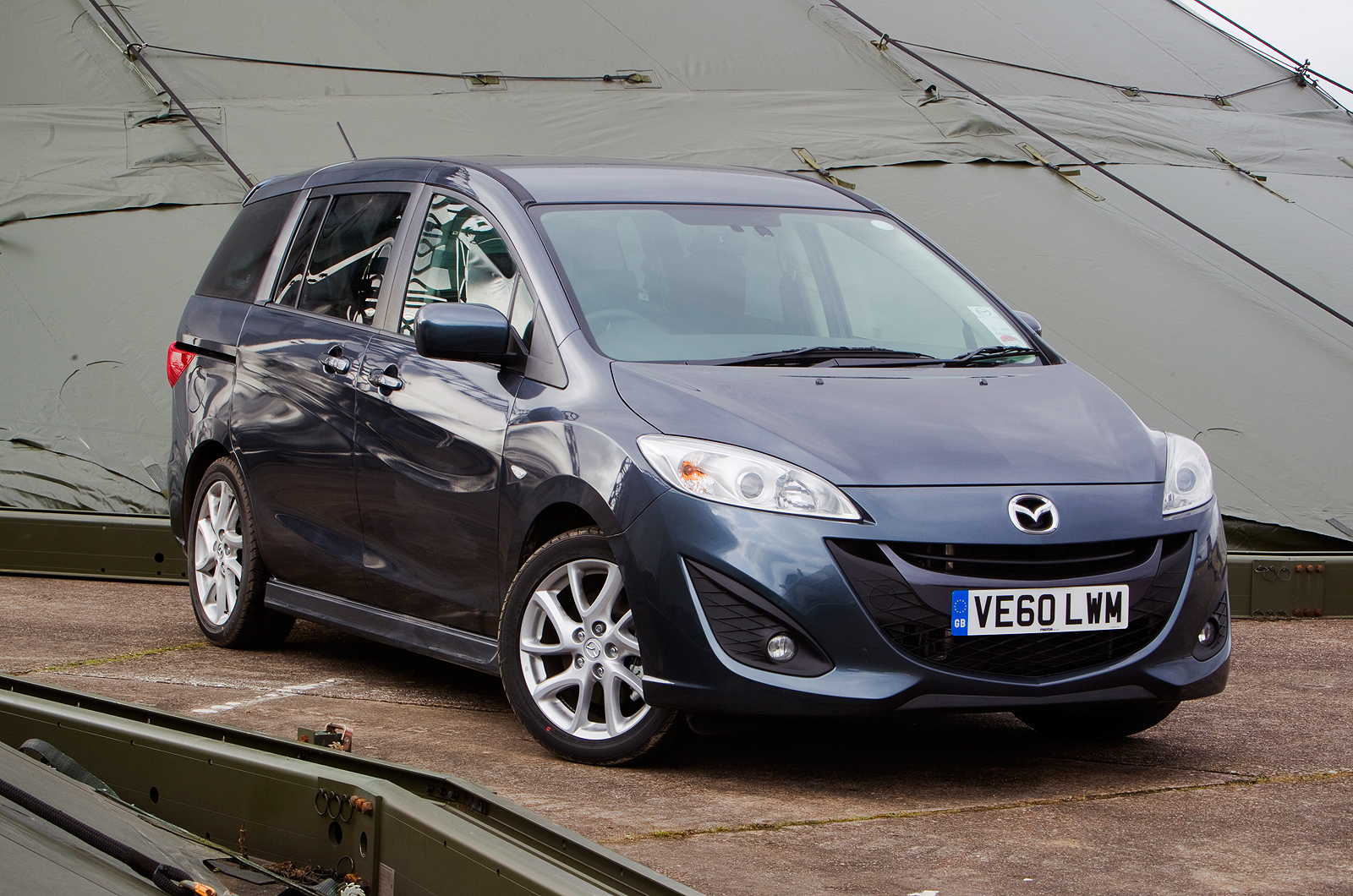Prior to the Mazda 5, the company’s interest in MPVs in Britain began in 2000, when it introduced both the imaginatively titled MPV and the Premacy to the UK. The MPV was a VW Sharan/Ford Galaxy rival, while the Premacy was a smaller car, and forerunner to the 5; it was based on Ford’s ‘C1’ (Focus) architecture. The Premacy remained on sale until the Mazda 5’s debut in 2005, making this the second-generation 5 model. We were moderately fond of the previous Mazda 5 and its innovative interior and sparky drive.
This new model made its UK debut towards the end of 2010 in petrol form only with a choice of 1.8-litre or 2.0-litre power, the latter available with Mazda’s stop/start technology. The diesel followed soon after, which, given that the 1.6-litre diesel version has a claimed fuel consumption figure some 35 percent better than either the 1.8 or 2.0 petrol models, ought to make it even more competitive.
Like its predecessor, the 5 is a medium-segment MPV, seating up to seven. Unusually for this sector, the 5 features sliding rear doors, a functional minivan trend followed by none of the Mazda’s major rivals, except, in its latest generation, Ford’s Grand C-Max. We regard the Ford highly, and it was a European Car of the Year finalist. We’ll see if a similar outcome awaits the Mazda.
The 5 is offered in three different trim levels: the TS is only available in the entry-level 1.8-litre car, while the TS2 and the Sport versions are available in the 2.0-litre petrol or 1.6-litre diesel.


